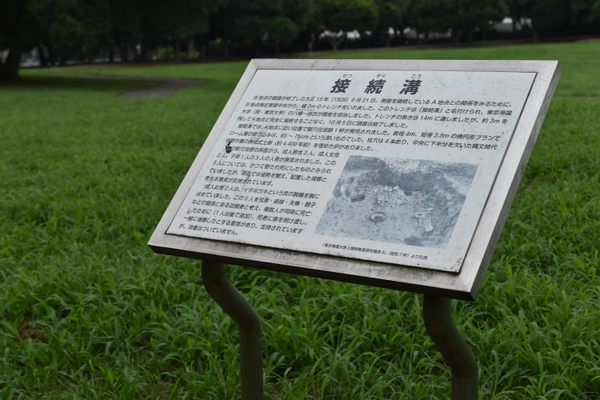One of the unusual things Japanese cuisine is known for is fugu, a potentially deadly fish, and people have been eating it not only for centuries but for millennia. In fact, fugu bones are found from time to time at Neolithic settlement sites as old as 4,000 years, suggesting that the history of it as food in Japan is quite long.
One of such sites is the Ubayama Shell Mound in Ichikawa, one of the many archaeological sites in the region. Dated to the mid-to-late Jōmon period (5,000-3,000 YBP), it has been excavated numerous times since 1893, providing a huge, diverse collection of shell and pottery specimens.
In 1926, archaeologists discovered the remains of a pit dwelling in Ubayama, in which a “family” of five – two adult females, two adult males, and a child – were found, striking the academic world with intrigue. The skeletons lay over one another and alongside them were fugu bones. Could this mean that they cooked the fish wrong and found out its poison the hard way, if not the first ever to do so?
The answer is yet to be revealed, but recent DNA tests have determined that the child – a five-year-old boy – was not related to the women, contesting the conventional theory that either of them must have been his mother. The causes of their deaths are still unclear, but recent theories suggest that their bodies were laid on the floor by other villagers as a sort of makeshift burial, rather than them being victims of an accident, be it food poisoning or earthquake.
So far, a total of 39 pit dwellings and 143 human remains have been found at the Ubayama Shell Mound, making it one of the most notable archaeological sites in Japan. It was designated as a National Historic Site in 1967 and subsequently maintained as a public park, popular among kids and dog walkers unaware of the mysteries buried underneath.
Know Before You Go
The park is open 24/7. To visit the site, first get to either Moto-Yawata Station or Funabashi-Hoten Station. rom the former, take the No. 13 bus (frequency: every 20 minutes), get off at Ichikawa Higashi Koko Iriguchi stop, and then walk for 20 minutes. From the latter, it’s a 20-minute walk. Though there isn’t much of archaeological remains per se, look closely at the ground and you may find ancient shells scattered around.

